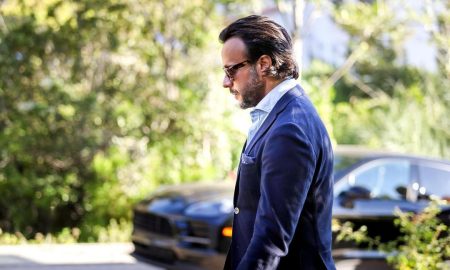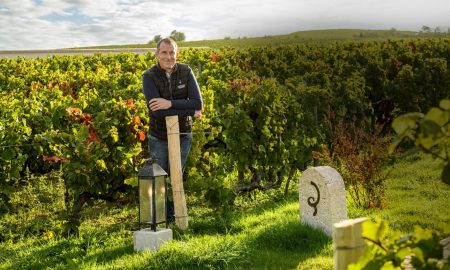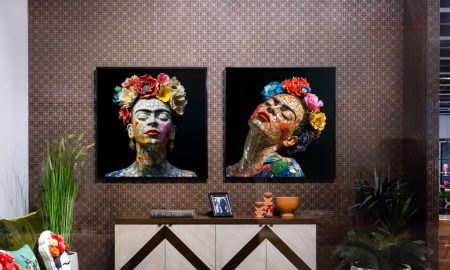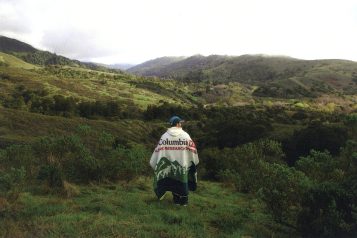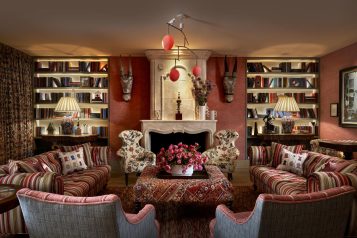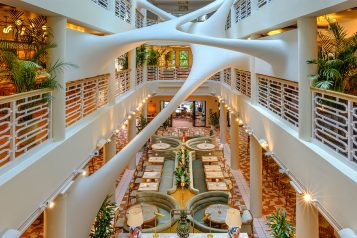
Photo Credit: Marlene Awaad
Bordeaux produces some of the finest grapes and thus, the most prestigious wines in the world and among them, there are only five Premier Grand Crus — the creme de la creme, if you will — of wines. Those include Château Mouton-Rothschild, Château Haut-Brion Graves, Château Latour, Château Margaux and Château Lafite Rothschild. On Friday, Haute Living was lucky enough to sit down with Saskia de Rothschild, the joint manager and first-ever female Chairwoman of the latter, who, at 33, happens to be the youngest head of a first-growth Bordeaux estate. She took on the role two years ago during the brand’s 150th anniversary, when her father, Baron Eric de Rothschild, passed on the family torch.
As the sixth generation, Saskia grew up spending time in her family’s vines. But she went in a different direction at first and studied at Columbia Journalism School to pursue a career as an investigative journalist for the The New York Times as a freelancer, covering stories in Paris and in West Africa. But she would eventually come back to Bordeaux each year, for harvest at Lafite. When she was 19, she interned at sister property Château L’Évangile in Pomerol. One year later, she joined the team at Château Lafite Rothschild to take part in the important responsibility of blending each vintage of the Premier Grand Cru.
Each January, Saskia returned home to Pauillac in the Bordeaux region of France, to help the family estate with blending that year’s vintage. She published her first novel, Erable, in 2015 —the same year she joined the family company full-time — and started studying to become a viticulturist and oenologist. As the millennial face of the family’s global wine empire, she’s responsible for running eight wineries on three continents. She’s now using her millennial touch to soften the perception some may have of Bordeaux’s slightly stuffy personality and reintroduce her generation to the region’s prestigious wine. One of the goals closest to Saskia’s heart: convert the estates to more sustainable agriculture. Over the past few years, Château Lafite Rothschild has been growing organic vines and experimenting with biodynamic practices, and this year it will be 100-percent organic, following Château L’Évangile and Domaine d’Aussières in Languedoc.
During our chat, Saskia taught us about her favorite wines under the Château Lafite Rothschild umbrella, and unveiled the 2018 vintage Château Lafite Rothschild vintage exclusively for the U.S. market (with its reimagined symbol playing on Lafite’s historic and centenary label, with the help of illustrator Black Adder, in honor of its 150-year milestone). Check out key elements from our HL x Coravin series tasting and watch the full chat below!
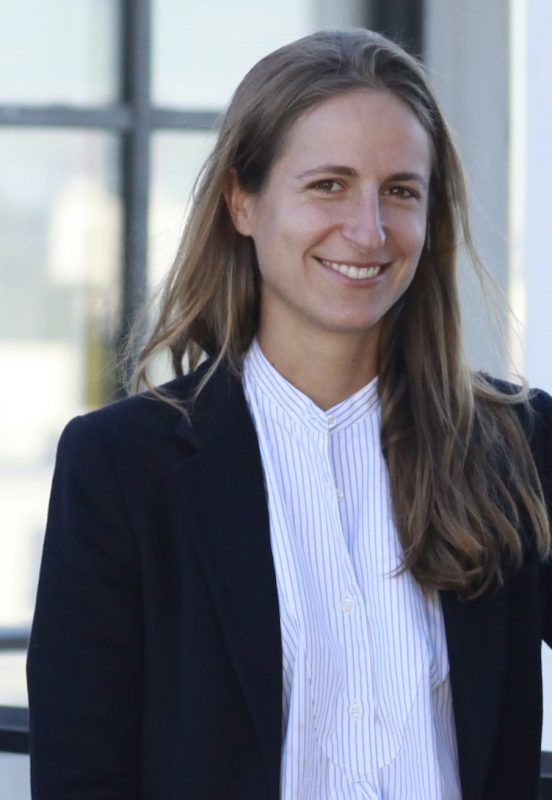
How do you see the image of Bordeaux developing or changing in the next five to 10 years?
The big challenge for me and for all the viticulturists of Bordeaux is for the younger generation to drink Bordeaux. Bordeaux wines have the image of the wines our parents used to drink, this quite serious image, and I guess it’s very important for us to take them into this next generation. The second biggest challenge is of course sustainability and how do you think about that in a region that is quite a difficult wine region. It’s our duty to convert our estates to organic farming, a new way of farming, and I think that’s a big challenge that we’ll definitely be carrying in the next five to ten years.

Photo Credit: Marlene Awaad
Let’s talk about the surprise, the 2018 Lafite.
On the label there is a little addition from the usual labels. There’s a hot air balloon in the sky that says CL. CL in Roman numerals is 150. 2018 marked the 150th anniversary of our family being here in Pauillac and we thought ‘What should we do?’ We usually put a little symbol on the neck of the bottle but we thought we should go a step further, so we decided to put something on the [label] of the bottle, something subtle enough for people not to notice it [and instead of just talking about the label, focus on] what is in the bottle. We thought, ‘What was flying in the sky in 1868 years ago that is still flying today”? And I think that’s a good symbol, because all we really need to do today is slow down and the hot air balloon does exactly that. It tells the story of Lafite and of us slowly passing the test of time and [figuring out] where we are and what we’re doing.

Photo Credit: DBR Lafite/L’Evangile
This was a lousy year for the pandemic but was it a good year for winemaking?
I’m in the middle of it. It’s such a difficult year… it’s difficult to walk and go forward when you don’t know what’s happening next. What’s very reassuring to me and we really have a chance in our job to cling to is that whatever happens, the vine was going through its cycles. In March we were all in confinement, all of France was in lockdown. One thing was not in lockdown and that was vines. We had to react. We had to be on the ground. We had people who had to come help out outside to help protect the vintage. The final result, we went to harvest with masks on, with giving people different teams — the red team, blue team, yellow team and green team — and they couldn’t cross paths because of cross-contamination. We had this very intricate system. In the end, the wine we’ve been drinking for the past months is absolutely beautiful. It warms my heart. I can say, ‘Whatever happens, we managed as a team and it was really working collectively to produce a great wine.’
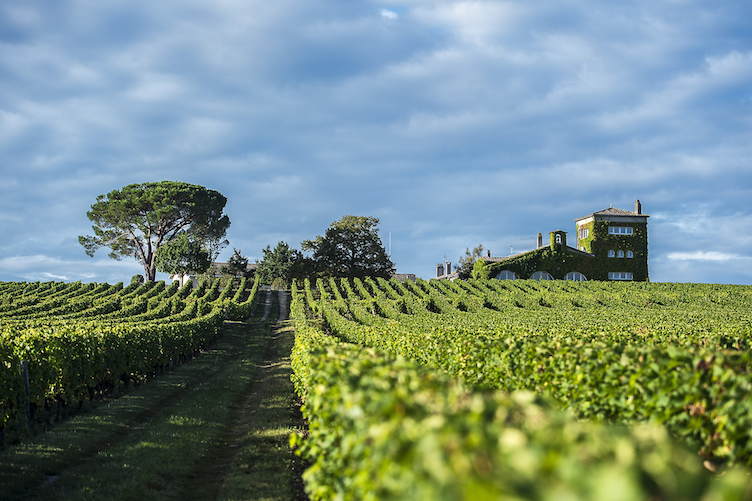
Photo Credit: DBR Lafite/Chateau Rieussec
ALL ABOUT THE 2018 VINTAGE
2018 was a very potent vintage. An interesting point is that Lafite 2018 is a wine that has 13.3 degrees alcohol. I don’t want to be geeky about it but it’s very interesting because it shows that a good terroir and good soil are your best tools against climate warming… 2018 was a great vintage that really showed us what Lafite is capable of… On the nose what’s interesting is that it’s super characteristic of Lafite in that it has that cedar nose that I really love, a little bit of graphite… and it’s already super open for a wine that’s this young. In the mouth… what I love about this wine is that it’s the balance that it has. It’s extremely rich and fruit forward when you have it in your mouth… then you get this second wave of very soft tannins and granular tannins… I’m still taking it right now and it’s been three or four seconds that it was in my mouth. At the same time it’s very classical Lafite… but more forward than we’re used to. I think it’s surprising but a good surprise.










